Abstract
Three pigeons were exposed to a second-order schedule in which the behavior specified by a fixed-interval component schedule was reinforced according to a ratio overall schedule. The completion of components not followed by food was signalled by a brief stimulus never paired with food. Food and the stimulus occurred in a random sequence or in fixed alternation, but the overall schedules (variable ratio 2 or fixed ratio 2) ensured that an equal number of food and brief-stimulus presentations occurred in each session. The control exerted by the food and by the brief stimulus was measured by overall response rates, mean pauses, frequency distributions of pauses, and response patterning across components. In general, the stimulus controlled patterns of behavior more similar to those controlled by food when food and the stimulus occurred in a random sequence than when they occurred in fixed alternation.
Keywords: second-order schedules, fixed-interval components, nonpaired brief stimuli, schedule control, conditioned reinforcement, omission effect, key peck, pigeons
Full text
PDF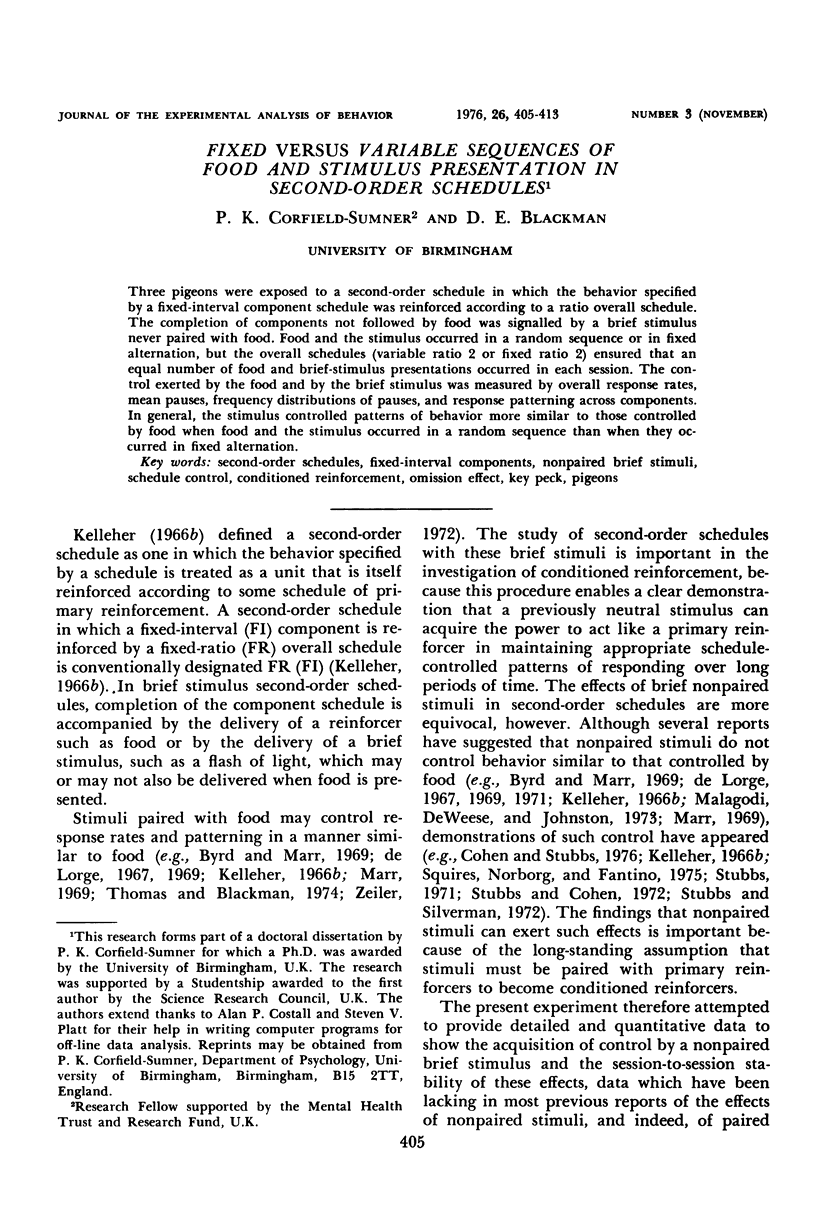
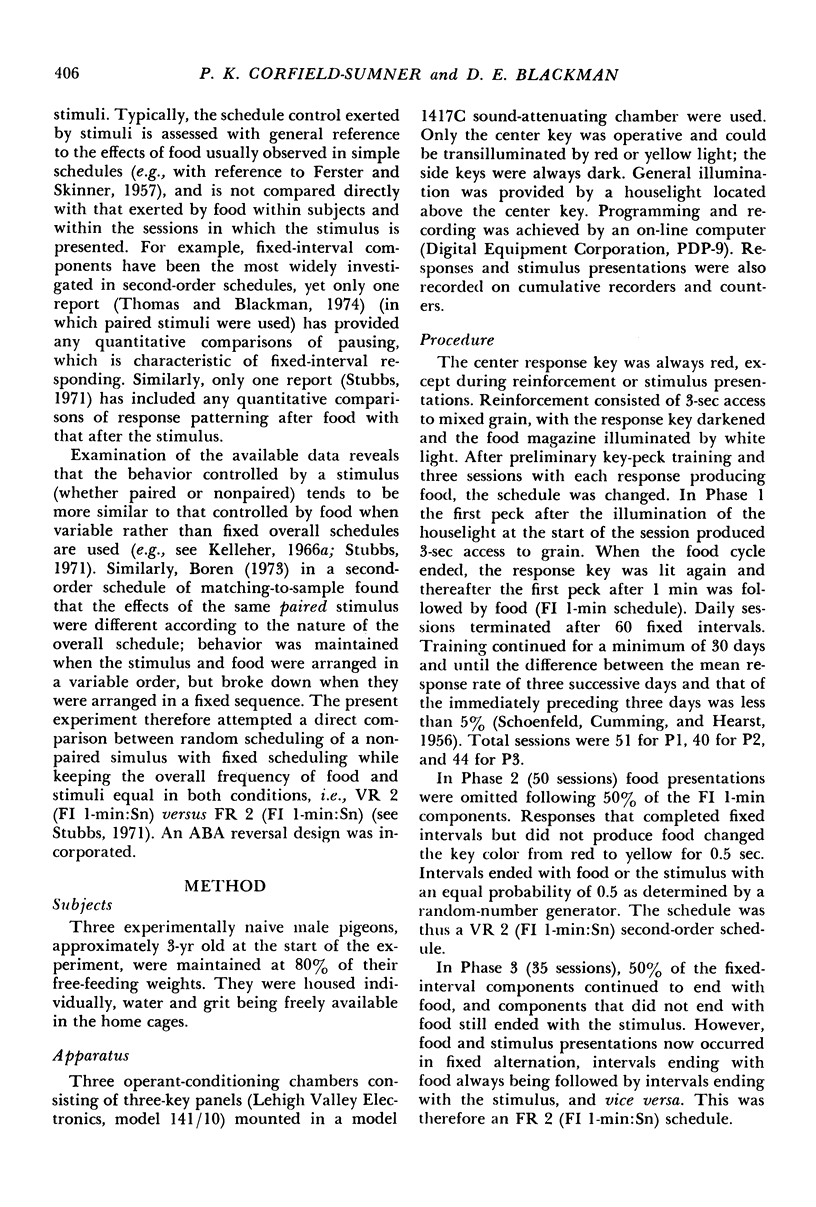

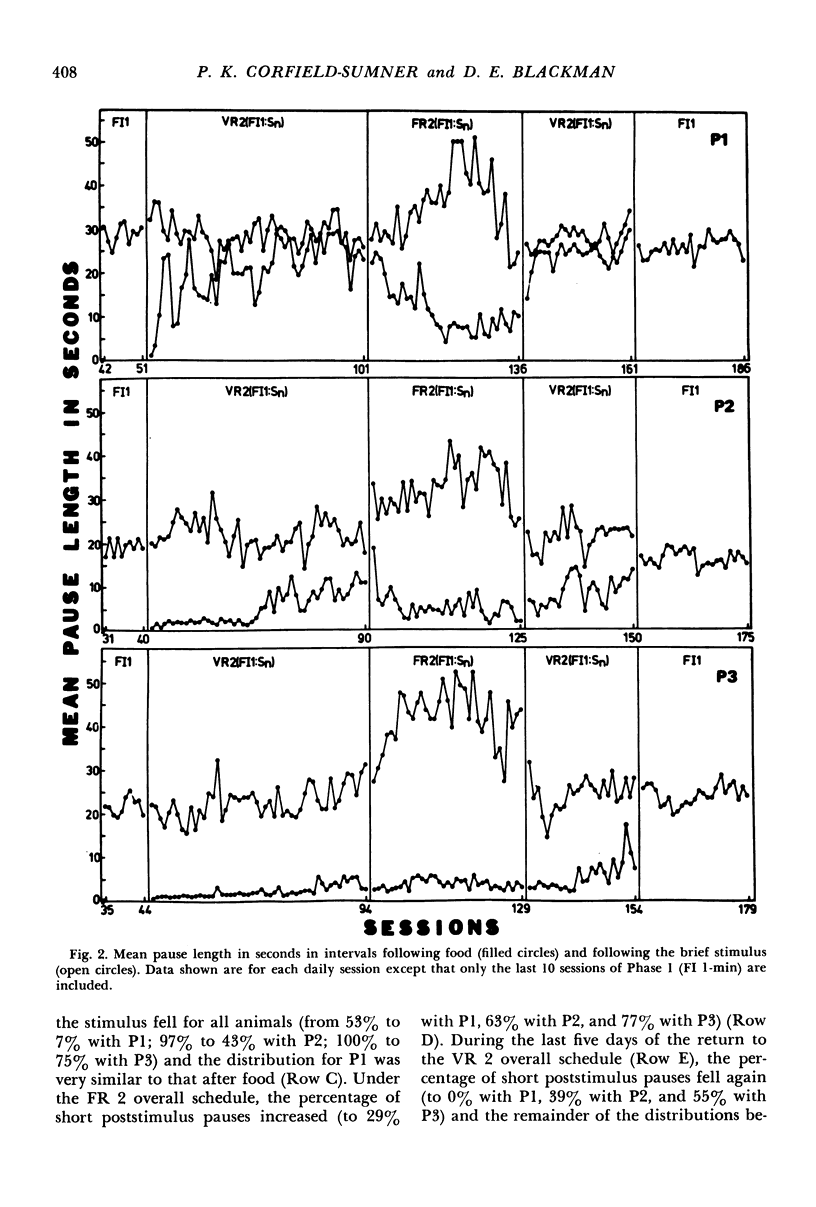



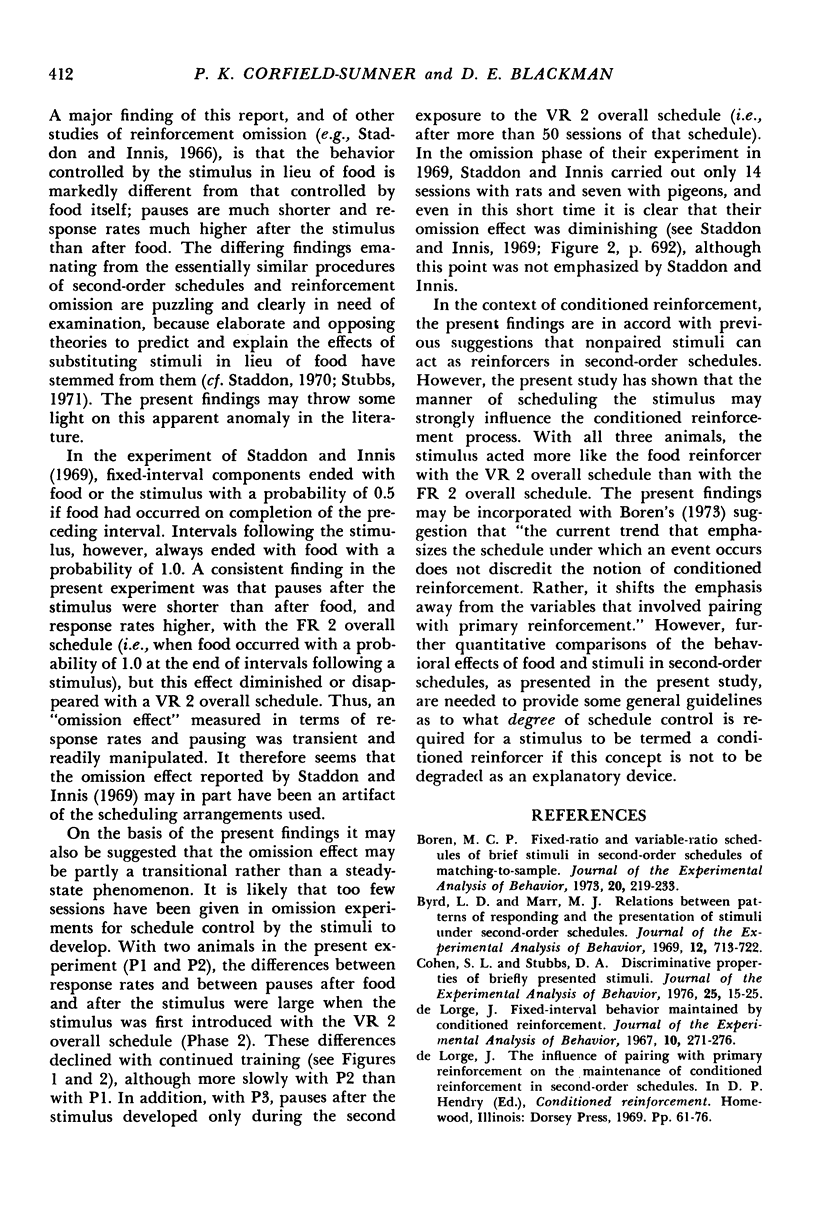
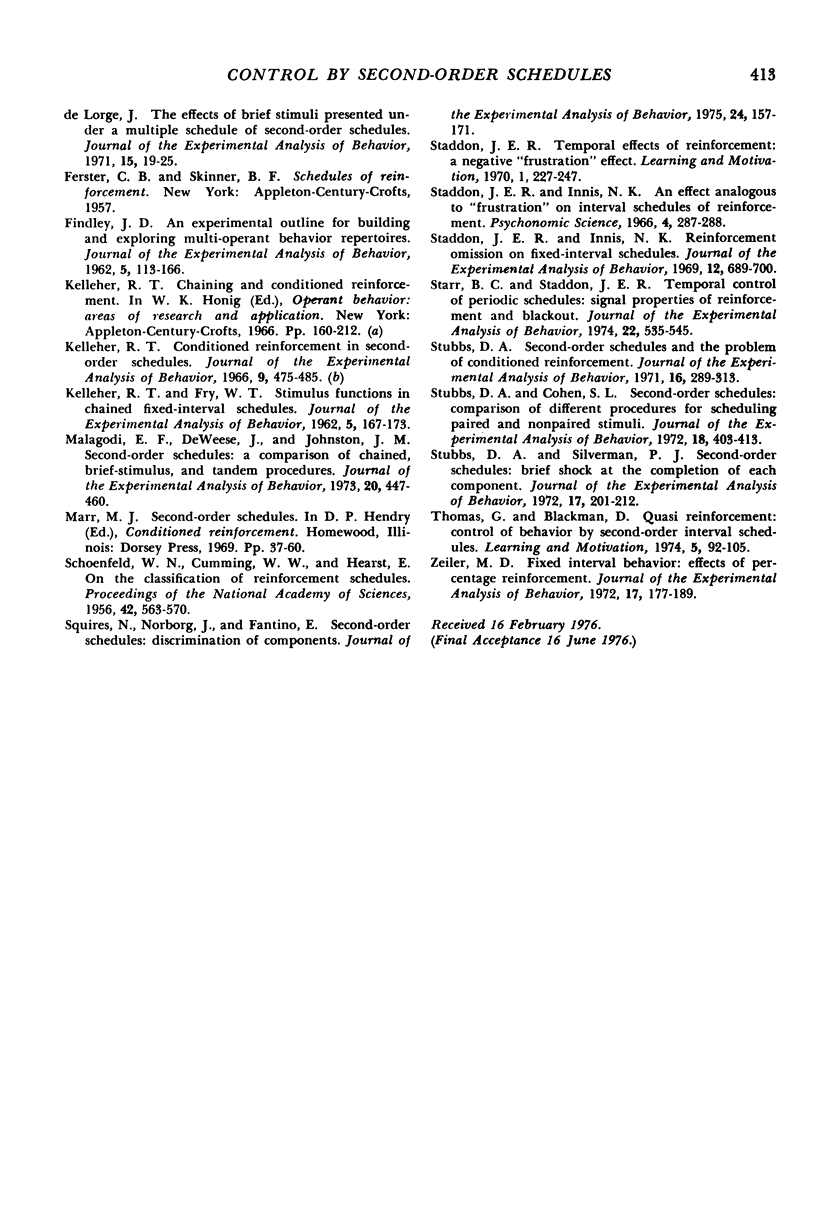
Selected References
These references are in PubMed. This may not be the complete list of references from this article.
- Boren M. C. Fixed-ratio and variable-ratio schedules of brief stimuli in second-order schedules of matching to sample. J Exp Anal Behav. 1973 Sep;20(2):219–233. doi: 10.1901/jeab.1973.20-219. [DOI] [PMC free article] [PubMed] [Google Scholar]
- Byrd L. D., Marr M. J. Relations between patterns of responding and the presentation of stimuli under second-order schedules. J Exp Anal Behav. 1969 Sep;12(5):713–722. doi: 10.1901/jeab.1969.12-713. [DOI] [PMC free article] [PubMed] [Google Scholar]
- Cohen S. L., Stubbs D. A. Discriminative properties of briefly presented stimuli. J Exp Anal Behav. 1976 Jan;25(1):15–25. doi: 10.1901/jeab.1976.25-15. [DOI] [PMC free article] [PubMed] [Google Scholar]
- De Lorge J. Fixed-interval behavior maintained by conditioned reinforcement. J Exp Anal Behav. 1967 May;10(3):271–276. doi: 10.1901/jeab.1967.10-271. [DOI] [PMC free article] [PubMed] [Google Scholar]
- De Lorge J. The effects of brief stimuli presented under a multiple schedule of second-order schedules. J Exp Anal Behav. 1971 Jan;15(1):19–25. doi: 10.1901/jeab.1971.15-19. [DOI] [PMC free article] [PubMed] [Google Scholar]
- FINDLEY J. D. An experimental outline for building and exploring multi-operant behavior repertoires. J Exp Anal Behav. 1962 Jan;5(Suppl):113–166. doi: 10.1901/jeab.1962.5-s113. [DOI] [PMC free article] [PubMed] [Google Scholar]
- KELLEHER R. T., FRY W. T. Stimulus functions in chained fixed-interval schedules. J Exp Anal Behav. 1962 Apr;5:167–173. doi: 10.1901/jeab.1962.5-167. [DOI] [PMC free article] [PubMed] [Google Scholar]
- Malagodi E. F., Deweese J., Johnston J. M. Second-order schedules: a comparison of chained, brief-stimulus, and tandem procedures. J Exp Anal Behav. 1973 Nov;20(3):447–460. doi: 10.1901/jeab.1973.20-447. [DOI] [PMC free article] [PubMed] [Google Scholar]
- Schoenfeld W. N., Cumming W. W., Hearst E. ON THE CLASSIFICATION OF REINFORCEMENT SCHEDULES. Proc Natl Acad Sci U S A. 1956 Aug;42(8):563–570. doi: 10.1073/pnas.42.8.563. [DOI] [PMC free article] [PubMed] [Google Scholar]
- Squires N., Norborg J., Fantino E. Second-order schedules: discrimination of components. J Exp Anal Behav. 1975 Sep;24(2):157–171. doi: 10.1901/jeab.1975.24-157. [DOI] [PMC free article] [PubMed] [Google Scholar]
- Staddon J. E., Innis N. K. Reinforcement omission on fixed-interval schedules. J Exp Anal Behav. 1969 Sep;12(5):689–700. doi: 10.1901/jeab.1969.12-689. [DOI] [PMC free article] [PubMed] [Google Scholar]
- Starr B. C., Staddon J. E. Temporal control of periodic schedules: signal properties of reinforcement and blackout. J Exp Anal Behav. 1974 Nov;22(3):535–545. doi: 10.1901/jeab.1974.22-535. [DOI] [PMC free article] [PubMed] [Google Scholar]
- Stubbs D. A., Cohen S. L. Second-order schedules: comparison of different procedures for scheduling paired and nonpaired brief stimuli. J Exp Anal Behav. 1972 Nov;18(3):403–413. doi: 10.1901/jeab.1972.18-403. [DOI] [PMC free article] [PubMed] [Google Scholar]
- Stubbs D. A. Second-order schedules and the problem of conditioned reinforcement. J Exp Anal Behav. 1971 Nov;16(3):289–313. doi: 10.1901/jeab.1971.16-289. [DOI] [PMC free article] [PubMed] [Google Scholar]
- Stubbs D. A., Silverman P. J. Second-order schedules: brief shock at the completion of each component. J Exp Anal Behav. 1972 Mar;17(2):201–212. doi: 10.1901/jeab.1972.17-201. [DOI] [PMC free article] [PubMed] [Google Scholar]
- Zeiler M. D. Fixed-interval behavior: effects of percentage reinforcement. J Exp Anal Behav. 1972 Mar;17(2):177–189. doi: 10.1901/jeab.1972.17-177. [DOI] [PMC free article] [PubMed] [Google Scholar]


